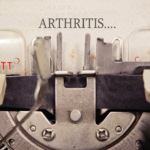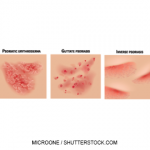 August is Psoriasis Action Month. Throughout the month, the National Psoriasis Foundation (NPF) is sharing resources for treating and managing psoriatic disease to empower patients to take control of their health. Formerly called Psoriasis Awareness Month, this year’s name change is more than symbolic. Mike Siegel, PhD, vice president of research for the NPF, sees the change as a chance to urge rheumatologists, dermatologists and other physicians to aggressively treat psoriasis and psoriatic arthritis.
August is Psoriasis Action Month. Throughout the month, the National Psoriasis Foundation (NPF) is sharing resources for treating and managing psoriatic disease to empower patients to take control of their health. Formerly called Psoriasis Awareness Month, this year’s name change is more than symbolic. Mike Siegel, PhD, vice president of research for the NPF, sees the change as a chance to urge rheumatologists, dermatologists and other physicians to aggressively treat psoriasis and psoriatic arthritis.
“People really aren’t aware [of the disease]—even if their friends or loved ones live with psoriatic disease. So making people aware is one thing,” Dr. Siegel says. “The next level is to help people take action around their disease. So get involved. Take control of your situation. Be confident in [speaking] to your healthcare provider, and get the level of treatment you want and you’re comfortable with.”
Given the statistics, action is necessary. Some 7.5 million people have psoriasis, according to the American Academy of Dermatology.1 And about 15% of people with psoriasis—more than 1 million people—develop psoriatic arthritis, according to the American College of Rheumatology.2
Treat to Target
A major highlight of this year’s action month is to promote treat to target, a strategy the NPF launched in late 2016 to enable providers and patients to set specific targets or goals to improve their health outcomes. The campaign debuted in November 2016 with the online publication of “From the Medical Board of the National Psoriasis Foundation: Treatment Targets for Plaque Psoriasis” in the Journal of the American Academy of Dermatology. The article’s objective was to reduce the “severity of plaque psoriasis so that it covers 1% or less of a person’s body within three months after starting a treatment,” according to the NPF website.3
“If that level of [skin] clearance has not been achieved, then it’s acceptable to be at either 3% BSA [body surface area] or less, or having seen a 75% improvement from your original disease severity,” Dr. Siegel says. “And then at six months after the start of treatment, the patient should expect to be at a BSA of 1% or less from there on.”
Dr. Siegel adds, “We’re really helping provide a framework for patients to say, ‘This is a goal that I can strive for,’ [encouraging them] not to be complacent or comfortable with whatever it is they may be used to.” If the patient has had skin severity for a long time, they may think it’s just the way it is. “We want to help communicate that patients can set more aggressive treatment goals.”

